January 2024 Climate Summaries
Mobile Alabama and Pensacola Florida Area
National Weather Service Mobile Alabama
February 2, 2024
January 2024 in Review - For the most part, temperatures were close to monthly normal to open the new year, by around 1 to 2 degrees above/below off the means. The passage of a couple of arctic cold fronts the middle of the month brought a significant cold spell. In fact, there was an occurrence of light wintry precipitation on the 16th that actually stayed on the ground for longer than 24 hours in some of the colder/shaded areas. High temperatures at Mobile on the 16th, 17th and the 20th were very close to what the normal low temperatures should be. Pensacola saw daily highs on the 17th and 20th also very near or right on top of where the normal monthly daily low should be. Night-time lows from the 16th to the 21st plunged to values that averaged 14.1° below normal at Mobile and 16.2° below normal at Pensacola. Typical for the Gulf coast, a substantial warm spell soon followed. Average temperatures from the 23rd to the 27th lifted to a mean of 12.8° above normal at Mobile. In fact, the thermometer surged to tie a record on the 25th at Mobile. At Pensacola, the warm spell contributed to a mean of average temperatures of 10.0° above normal from the 23rd to the 27th.
Beneficial rainfall caused soil moisture to recover nicely with above normal rainfall falling at both Mobile and Pensacola. Each site did receive one day of record excessive rainfall on the 9th.
Mobile Alabama Area [Climate Normal Period 1991-2020, Climate Record Period 1872 to Present]- The average monthly high of 62.6° was 1.1° above normal. The average monthly low was 39.1° or 1.6° below normal. The average monthly temperature of 50.9° was 0.2° below normal. The highest temperature for the month was reached on the 12th and again on the 25th at 77°, 16° and 15° above the normal for these days respectively; the daily temperature on the 25th tied the previous record high as well. The previous record of occurrence on this date was set back in 1962. The lowest temperature for the month plunged to 19° on the morning of the 17th, 21° below normal for this date. (Fig. A) shows a graphical representation of how the Mobile area temperatures compared to the seasonal normal daily highs and lows, which are shown by the colored dashed lines. Bar graphs reflecting the daily high/low temperature departures from normal are provided in the table below (Figs. B and C). The rain gauge captured 8.03" (Fig. D), or 2.37" above normal. January 9th saw a new daily record rainfall reached when 1.45" was recorded. The previous daily record for the 9th was 1.26" occurring in 1999. Accumulated rainfall climatology for Mobile is provided in (Fig. E).
January Top Records for the Month During the Period of Record for the Mobile Area:
Click on the Mobile Alabama area climate graphics below to expand:
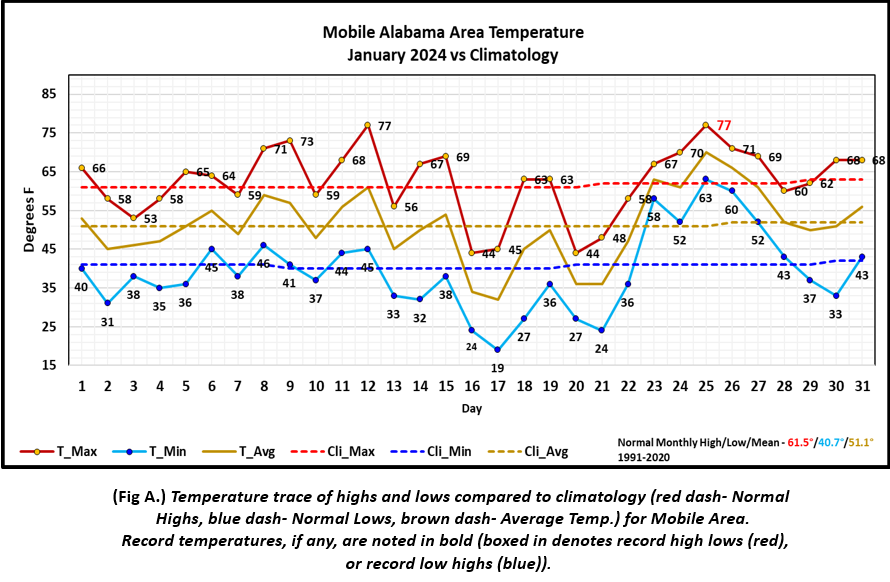
|
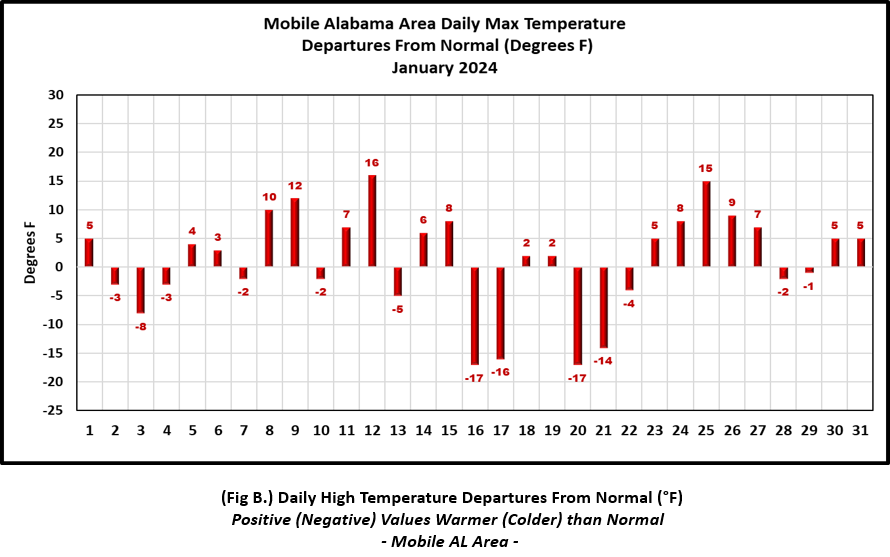
|
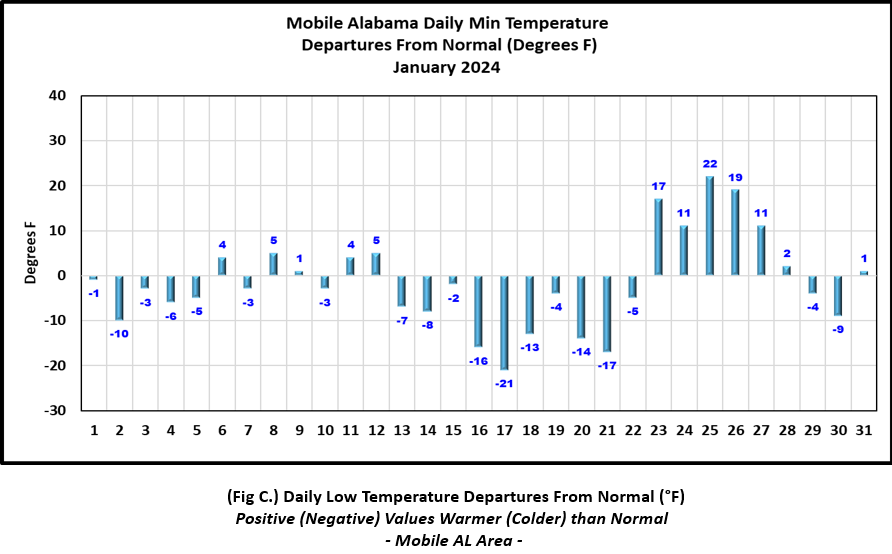
|
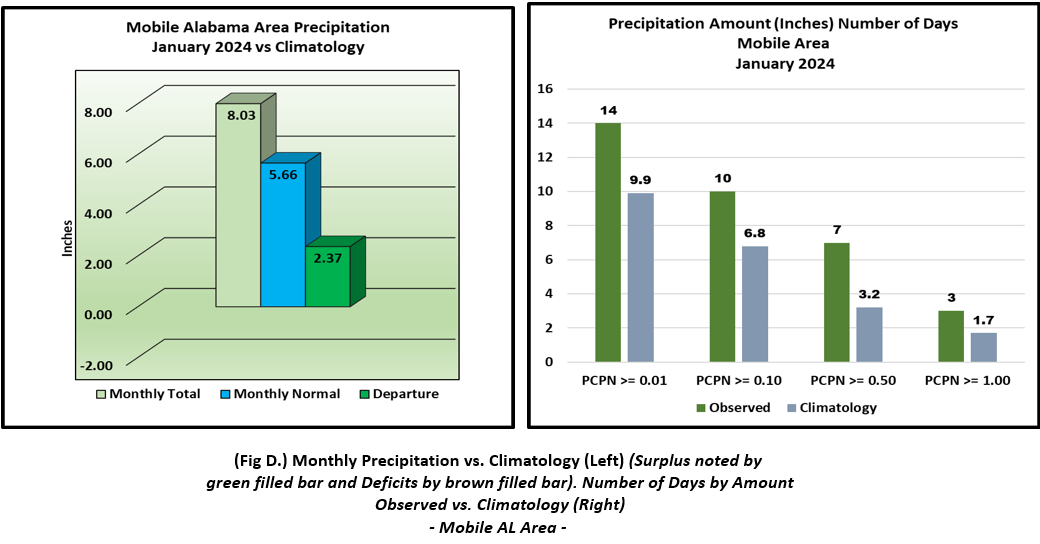
|
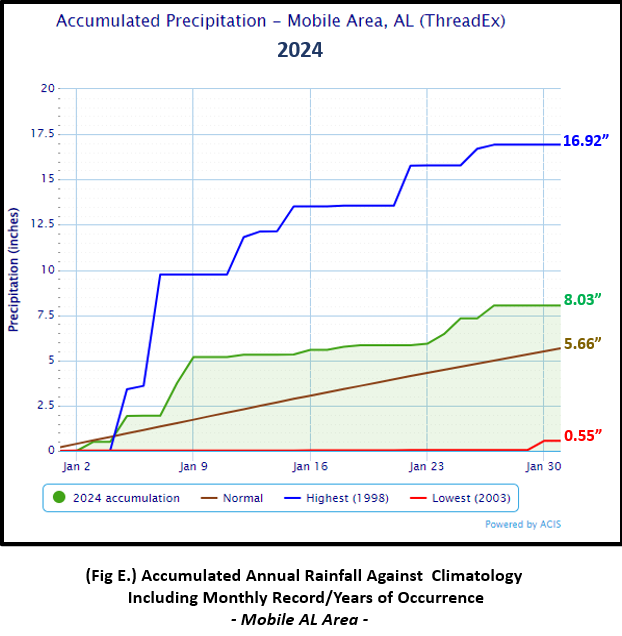
|
Pensacola Florida Area [Climate Normal Period 1991-2020, Climate Record Period 1879 to Present] - The average monthly high of 61.5° was 1.2° below normal. The average monthly low was 41.0° or 2.7° below normal. The average monthly temperature of 51.3° was 1.9° below normal. The highest temperature for the month was reached on the 12th and again on the 25th at 73°, 11° and 10° above the normal for these days respectively The lowest temperature for the month plunged to 20° on the morning of the 17th, 23° below normal for this date. Despite the cold and warm spells during the month, no record temperatures were reached. (Fig. F) shows a graphical representation of how the Pensacola area temperatures compared to the seasonal normal daily highs and lows, which are shown by the colored dashed lines. (Figs. G and H) shows the daily high/low temperature departures from normal. The rain gauge collected 6.29" (Fig. I), 1.26" above the monthly normal. January 9th saw a new daily record rainfall reached when 2.92" was recorded. The previous daily record for the 9th was 1.58" occurring way back in 1892. Accumulated rainfall climatology for Pensacola is provided in (Fig. J).
January Top Records for the Month During the Period of Record for the Pensacola Area:
Click on the Pensacola Florida area climate graphics below to expand:
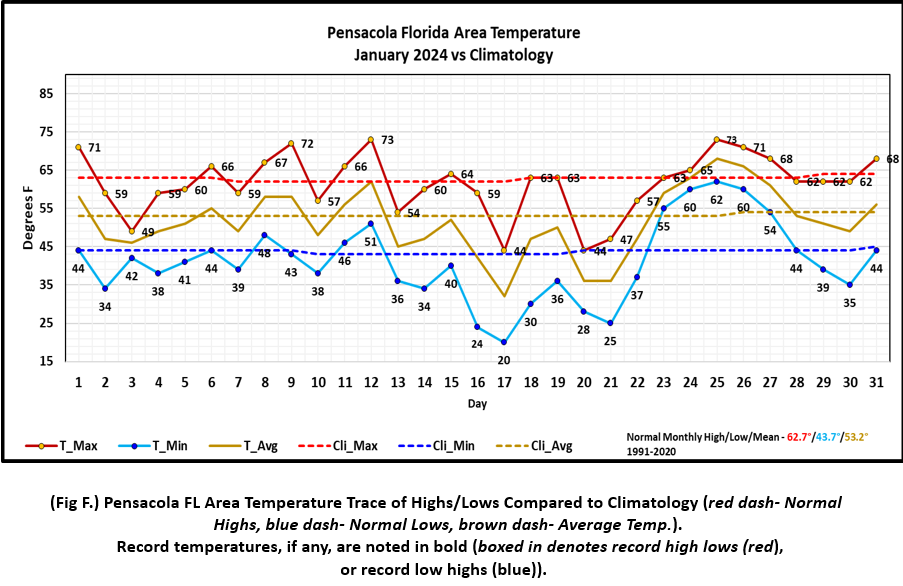
|
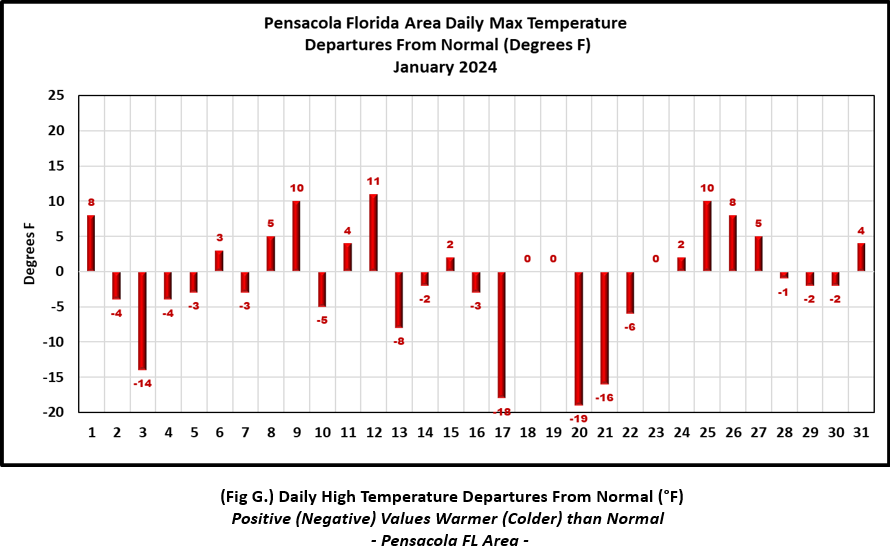
|
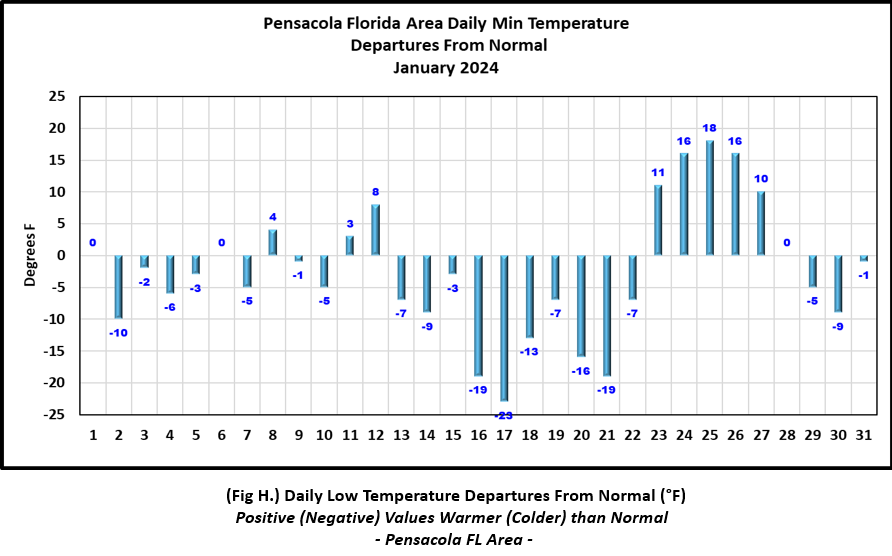
|
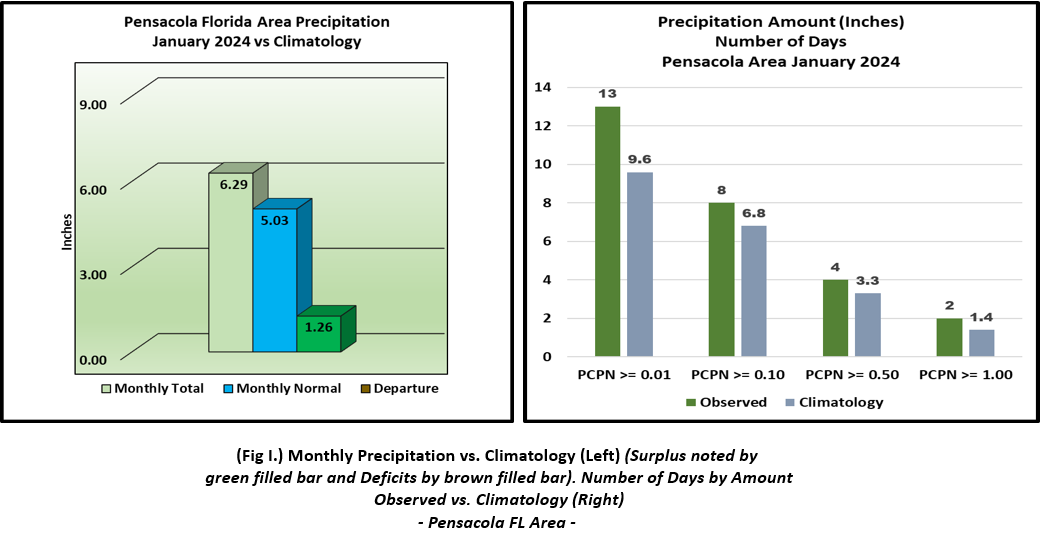
|
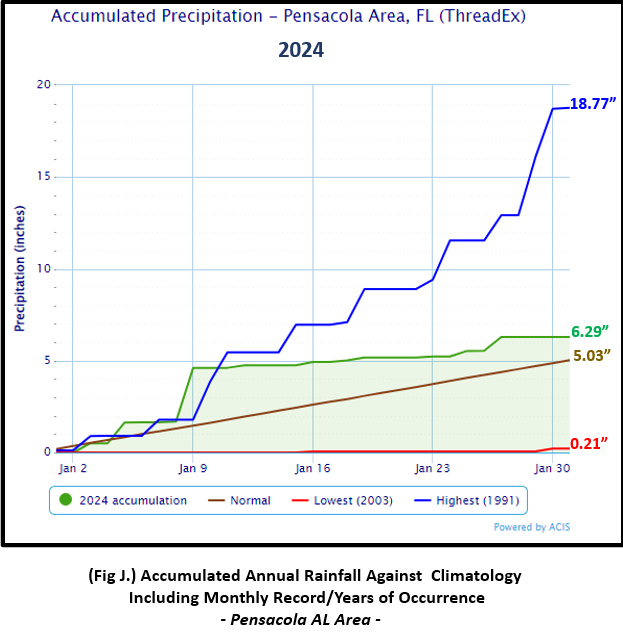
|
Additional January 2024 Climatology and Topics
The focus of the heaviest rain was mainly along and west of I-65. A narrow zone from Wiggins MS to south of Monroeville AL, saw monthly precipitation swelling to between 10 to 15 inches. Within these areas, an astounding 200 to 300% of normal monthly rains soaked the ground, which all but ended the higher intensity drought which maintained a firm grip along the central Gulf coast for the last quarter of 2023. Fig. K shows the areal monthly rainfall total, Fig. L shows the areal rainfall departures from normal and Fig. M, the areal percent of normal rainfall. The latest January 2024 monthly summary for Eglin Air Force Base (AFB) - KVPS and Duke Field - KEGI has been received and provided in the table below. The temperatures in the daily tables consists of numbers both in °F/°C. Data courtesy of Mr. David Biggar, Staff Meteorologist, 96th Weather Squadron. Provided by permission.
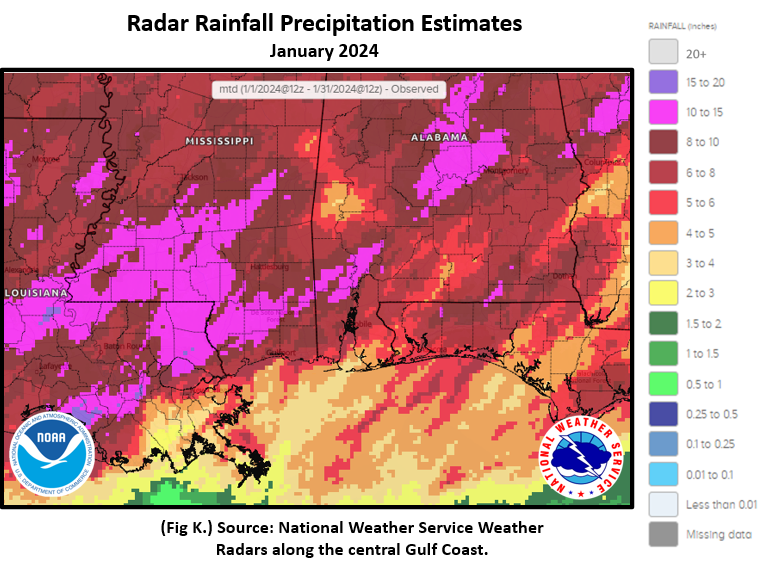
|
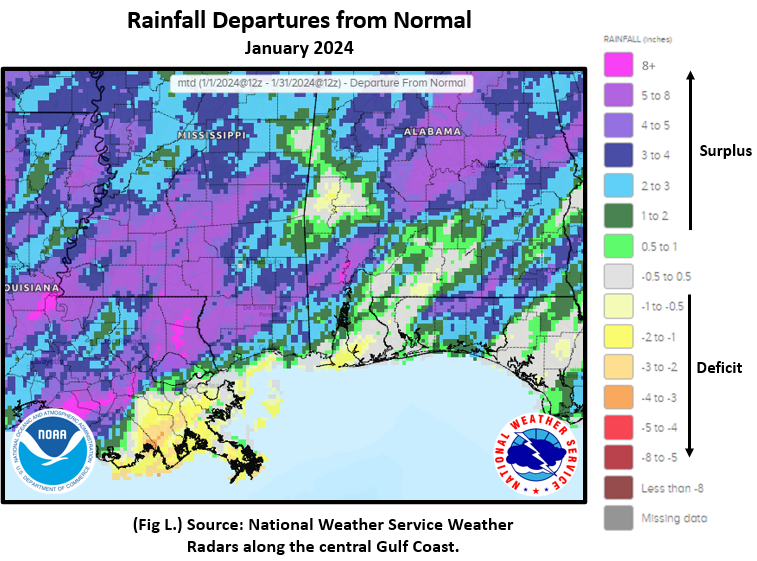
|
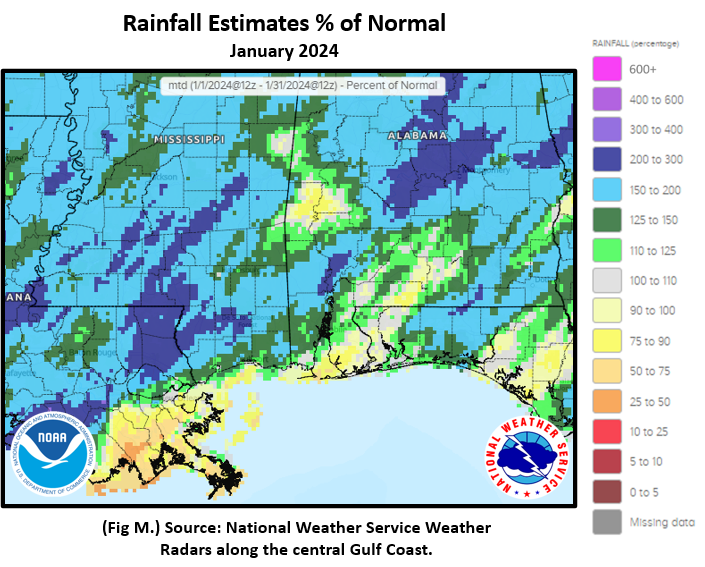
|

|
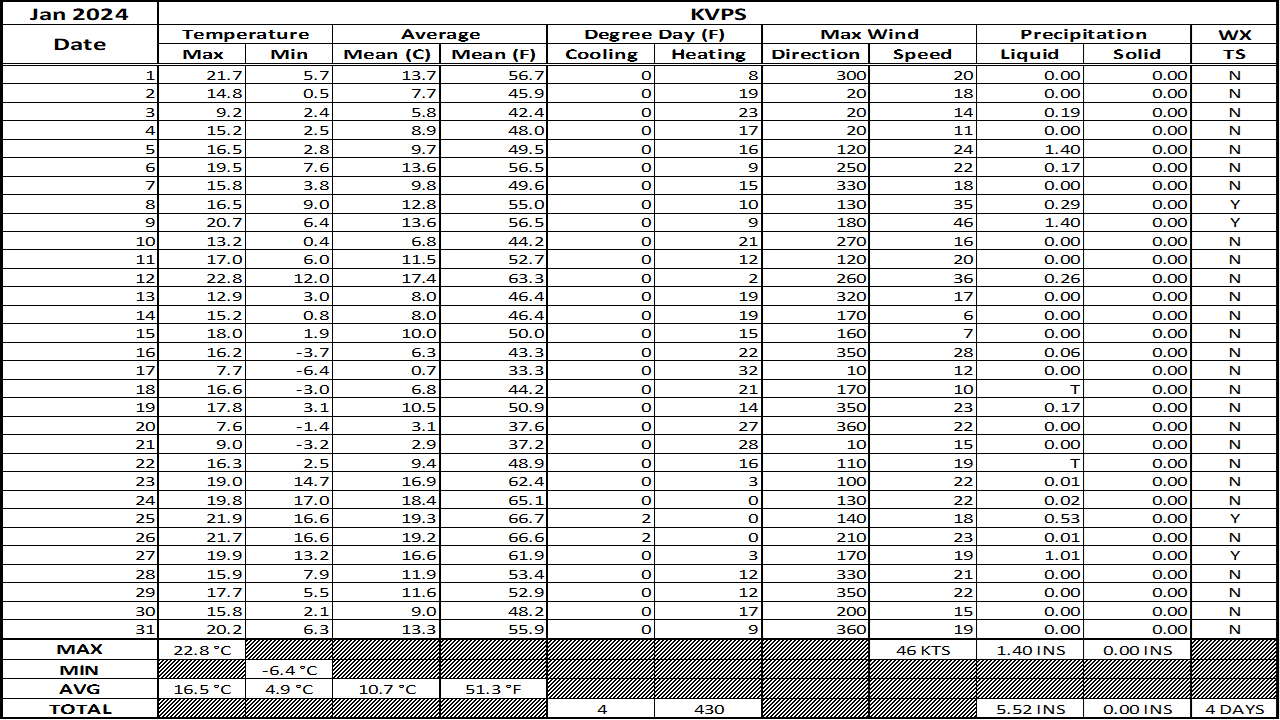
|
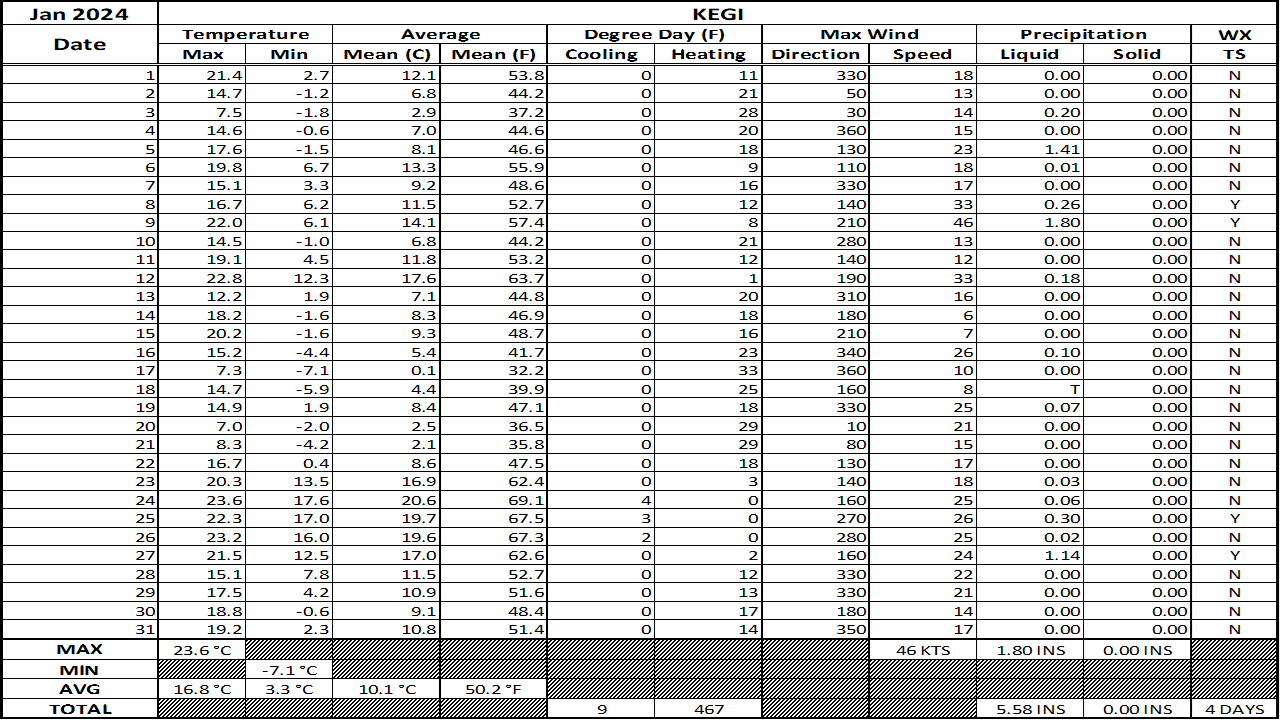
|
February 2024 Climatology, Seasonal Climatology and Outlooks:
The latest outlook for February favors temperatures to likely be near normal deep into the southeast to the Florida Peninsula while rainfall leans above normal for the month.
Click on the snap shots below to expand:
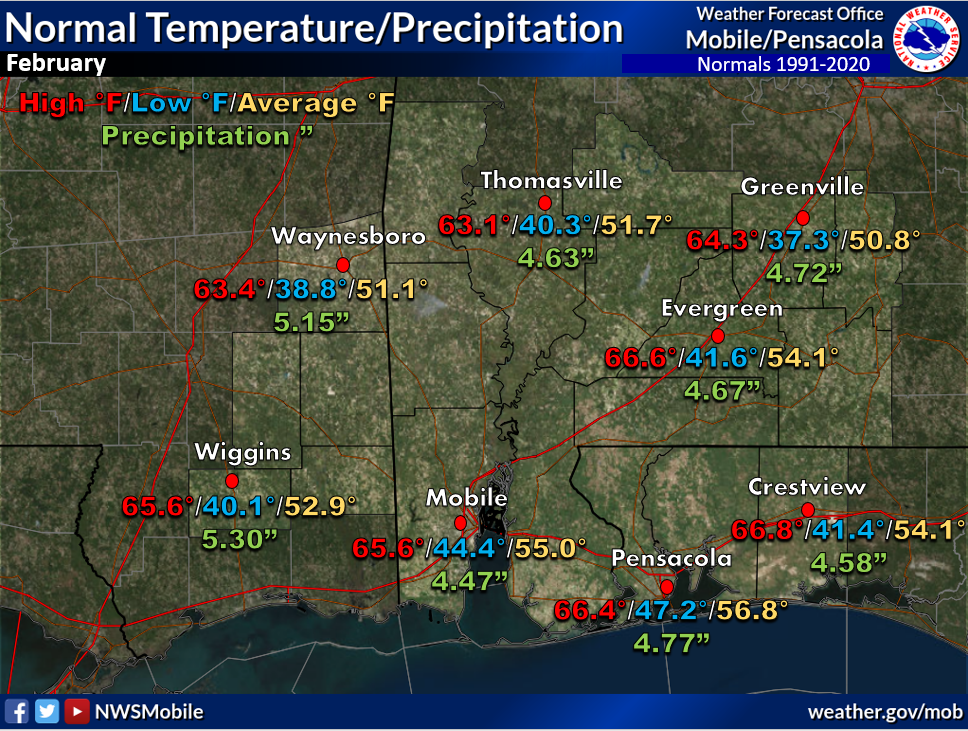 February Normals February Normals |
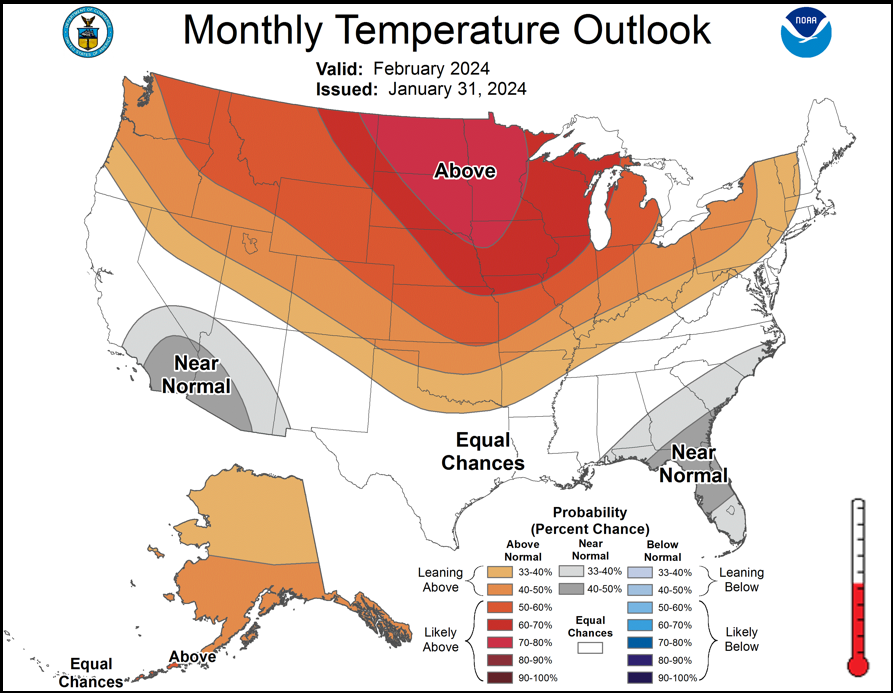
|
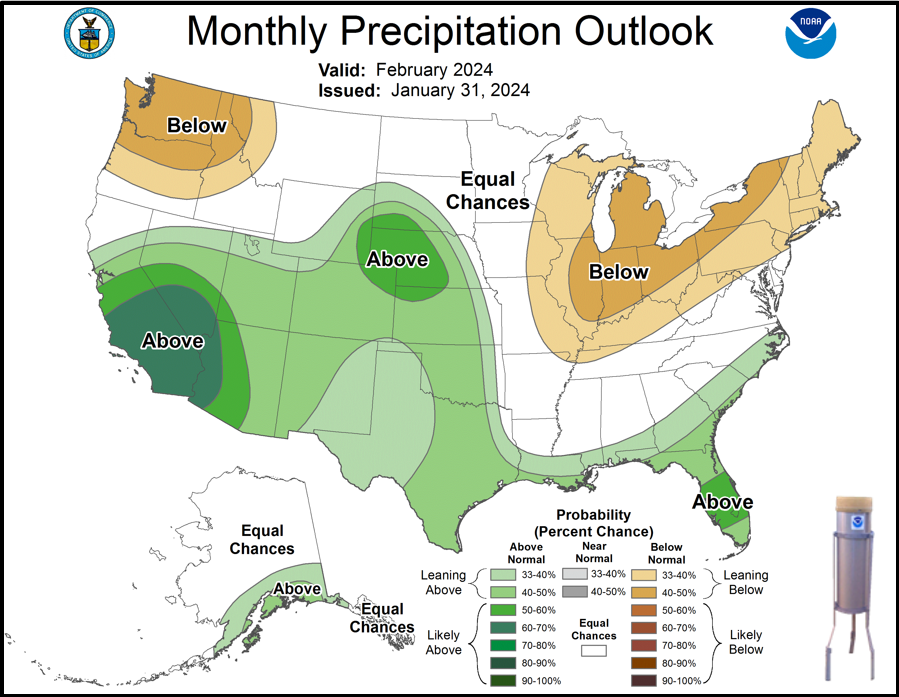
Outlook |
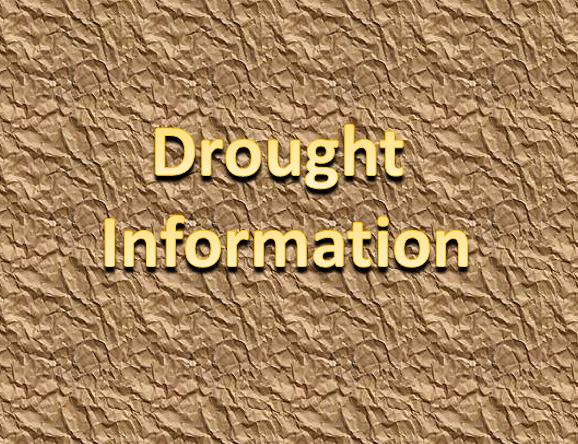
|

|
Additional Climate Links:
The National Weather Service Mobile Alabama's Climate and Past Weather page provides climate data at your fingertips for many observation points in the local forecast area by accessing the NOWData tab as well as many other climate resources. The Climate Prediction Center Link provides short and longer range climatic outlooks and education about the larger scale global circulations that impact temperatures and weather. With the large agriculture and farming presence along the central Gulf coast, the Drought Monitor link provides updates on drought trends and impacts. Another very helpful resource is the Community Collaborative Rain Hail and Snow (CoCoRaHS) network, which is a large group of volunteers working together to measure and map precipitation (rain, hail, and snow). The aim of CoCoRaHS is to provide the highest quality data for natural resource, education and research applications. You can be a part of the CoCoRaHS team by becoming a volunteer rainfall observer.